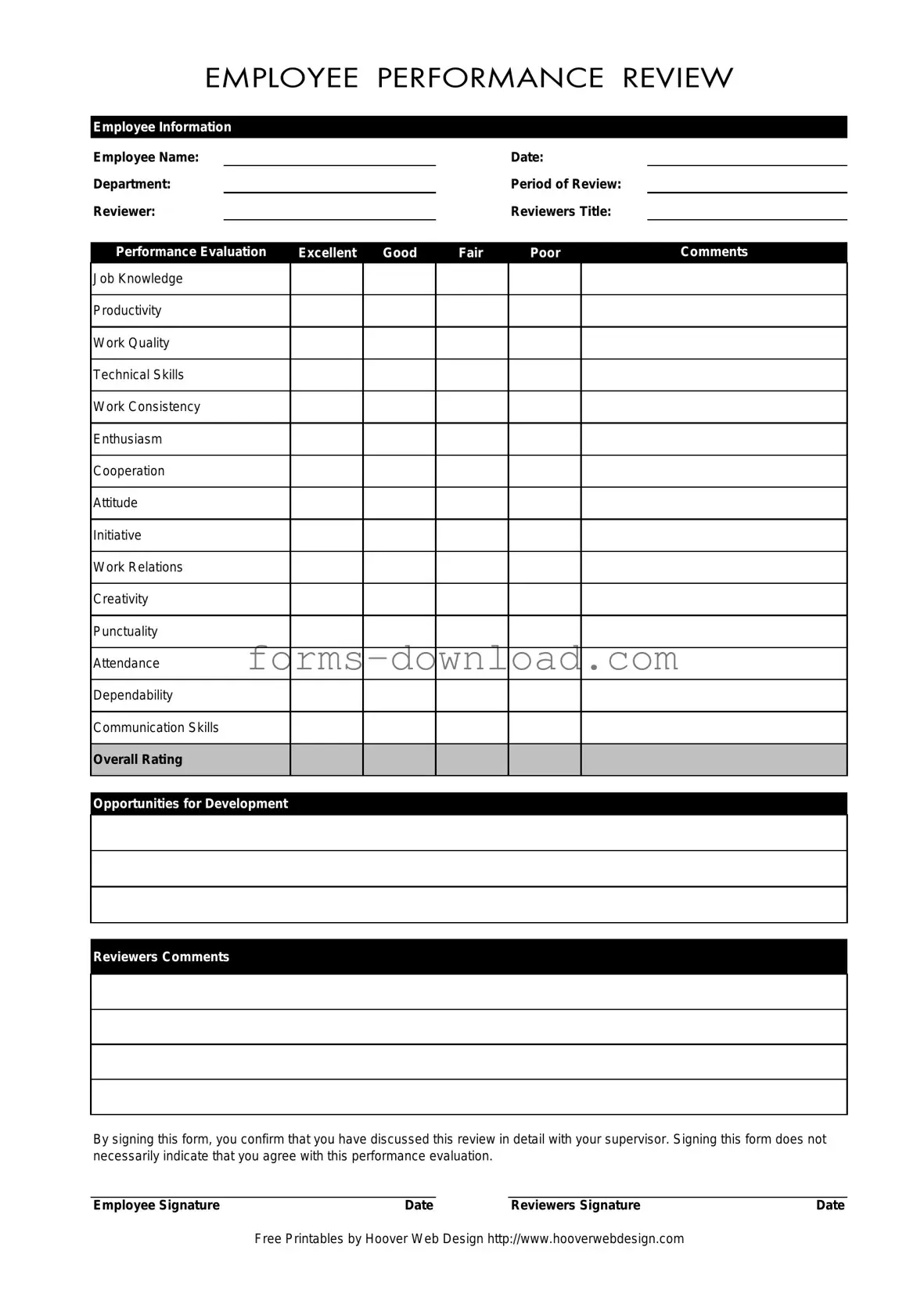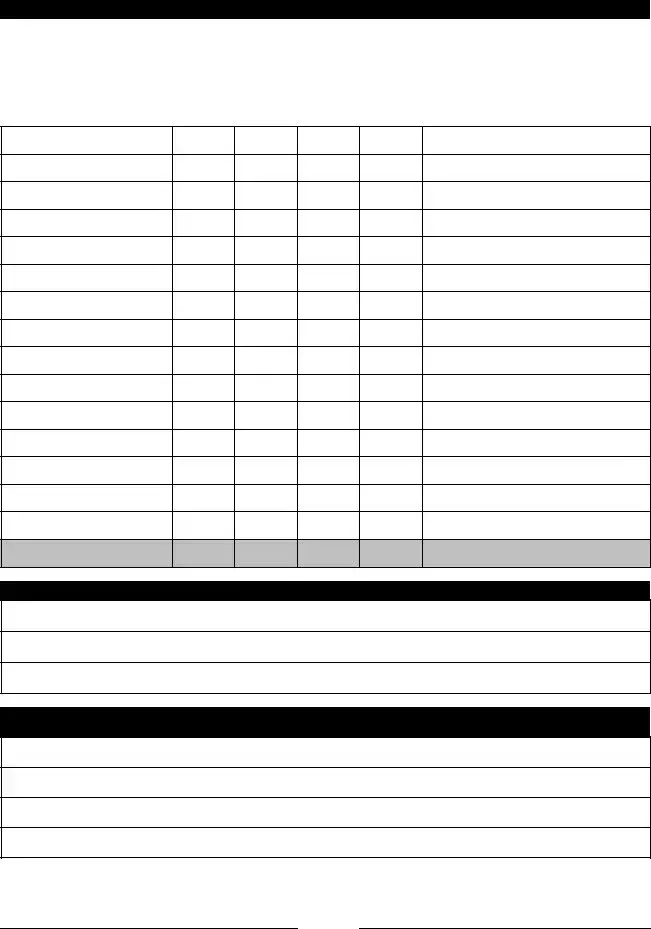The Employee form serves as a crucial tool in the performance evaluation process, allowing both employees and supervisors to engage in meaningful discussions about job performance. This form collects essential information, including the employee's name, department, and the period of review, ensuring that all relevant details are captured for a comprehensive assessment. The evaluation covers various performance metrics, such as job knowledge, productivity, and work quality, providing a structured way to gauge an employee's contributions. Additionally, it includes sections for assessing technical skills, enthusiasm, and communication abilities, among other attributes. Comments from both the reviewer and the employee are encouraged, fostering an environment of open dialogue. Importantly, the form concludes with a signature section, where employees acknowledge that they have discussed their review in detail with their supervisor, though signing does not imply agreement with the evaluation. This balance of accountability and transparency is vital for fostering a constructive workplace culture.

